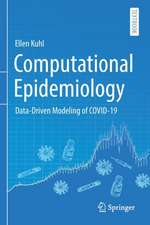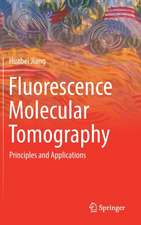Nonlinear Analysis for Human Movement Variability
Editat de Nicholas Stergiouen Limba Engleză Paperback – 14 oct 2024
While the presence of nonlinear dynamics can be explained and understood, it is difficult to be measured. A study of human movement variability with a focus on nonlinear dynamics, Nonlinear Analysis for Human Movement Variability, examines the characteristics of human movement within this framework, explores human movement in repetition, and explains how and why we analyze human movement data. It takes an in-depth look into the nonlinear dynamics of systems within and around us, investigates the temporal structure of variability, and discusses the properties of chaos and fractals as they relate to human movement.
Providing a foundation for the use of nonlinear analysis and the study of movement variability in practice, the book describes the nonlinear dynamical features found in complex biological and physical systems, and introduces key concepts that help determine and identify patterns within the fluctuations of data that are repeated over time. It presents commonly used methods and novel approaches to movement analysis that reveal intriguing properties of the motor control system and introduce new ways of thinking about variability, adaptability, health, and motor learning.
In addition, this text:
- Demonstrates how nonlinear measures can be used in a variety of different tasks and populations
- Presents a wide variety of nonlinear tools such as the Lyapunov exponent, surrogation, entropy, and fractal analysis
- Includes examples from research on how nonlinear analysis can be used to understand real-world applications
- Provides numerous case studies in postural control, gait, motor control, and motor development
| Toate formatele și edițiile | Preț | Express |
|---|---|---|
| Paperback (1) | 318.64 lei 6-8 săpt. | |
| CRC Press – 14 oct 2024 | 318.64 lei 6-8 săpt. | |
| Hardback (1) | 708.67 lei 6-8 săpt. | |
| CRC Press – 26 ian 2016 | 708.67 lei 6-8 săpt. |
Preț: 318.64 lei
Preț vechi: 359.76 lei
-11% Nou
Puncte Express: 478
Preț estimativ în valută:
60.98€ • 62.100$ • 50.75£
60.98€ • 62.100$ • 50.75£
Carte tipărită la comandă
Livrare economică 26 martie-09 aprilie
Preluare comenzi: 021 569.72.76
Specificații
ISBN-13: 9781032920634
ISBN-10: 1032920637
Pagini: 408
Ilustrații: 228
Dimensiuni: 156 x 234 mm
Greutate: 0.75 kg
Ediția:1
Editura: CRC Press
Colecția CRC Press
Locul publicării:Boca Raton, United States
ISBN-10: 1032920637
Pagini: 408
Ilustrații: 228
Dimensiuni: 156 x 234 mm
Greutate: 0.75 kg
Ediția:1
Editura: CRC Press
Colecția CRC Press
Locul publicării:Boca Raton, United States
Public țintă
PostgraduateCuprins
Introduction. Time Series. State-Space Reconstruction. Lyapunov Exponent. Surrogation. Entropy. Fractals. Autocorrelation Function, Mutual Information, and Correlation Dimension. Case Studies.
Notă biografică
Dr. Nick Stergiou is the distinguished community research chair in biomechanics and professor and director of the Biomechanics Research Building at the University of Nebraska Omaha. He is also a professor in the Department of Environmental, Agricultural, and Occupational Health of the College of Public Health at the University of Nebraska Medical Center. His research focuses on understanding variability inherent in human movement, and he recently founded the first ever Center for Research in Human Movement Variability. Dr. Stergiou is an international authority in the study of nonlinear dynamics and has published more than 200 peer-reviewed articles.
Descriere
This textbook gives engineering and other students the foundation they need in nonlinear analysis for studying movement variability in their practices. It introduces dynamical systems and time series and presents a wide variety of nonlinear tools such as Lyapunov exponent, surrogation, entropy, fractal analysis, and several others. Each chapter




















